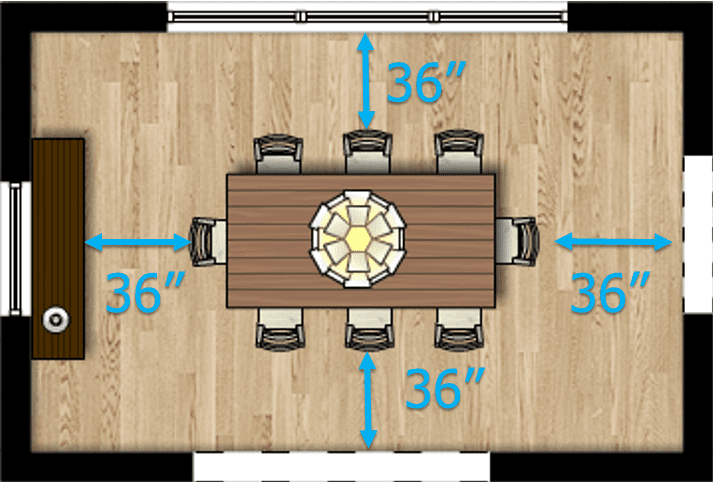Introduction:
The dining room is a central space in any home, serving as a hub for family gatherings, social events, and shared meals. Achieving the ideal dining room size is crucial for creating a welcoming atmosphere that balances comfort and style. In this exploration, we will delve into the factors influencing dining room size and provide insights into how to make the most of your space.
Consideration of Available Space:
The first step in determining the right dining room size is to assess the available space in your home. While larger homes may have the luxury of spacious dining areas, smaller homes or apartments require a more thoughtful approach to maximize functionality.
Seating Capacity:
One of the primary functions of a dining room is to accommodate family members and guests comfortably during meals. The size of your dining room should be proportional to the number of people you expect to seat regularly. A general rule of thumb is to allow at least 24 inches of table width per person for comfortable dining.
Table Shape and Placement:
The shape and placement of your dining table play a significant role in determining the overall feel of the room. Rectangular tables are classic and fit well in longer spaces, while round tables can create a more intimate setting. Consider leaving ample space around the table for ease of movement and to prevent a cramped feel.
Architectural Features and Layout:
Take into account any architectural features, such as windows, doors, and alcoves, when planning your dining room size. These elements can influence the placement of furniture and impact the overall flow of the space. A well-thought-out layout ensures a harmonious and functional dining area.
Multi-functional Spaces:
In modern homes, dining rooms often serve multiple purposes, such as a home office or a place for children to do homework. When determining the ideal dining room size, consider these additional functions and plan accordingly to create a versatile space that meets various needs.
Aesthetic Appeal and Design Elements:
Beyond functionality, the aesthetics of the dining room are crucial. The right balance between furniture size, lighting, and decor contributes to a visually pleasing atmosphere. Avoid overcrowding the room with furniture, and opt for a design that reflects your personal style while maintaining a sense of openness.
Lighting Considerations:
Adequate lighting is essential for creating a warm and inviting dining space. Pay attention to the placement and size of lighting fixtures, ensuring they complement the overall size of the room. A well-lit dining area enhances the dining experience and adds to the room’s appeal.
Flexibility for Entertaining:
Consider how often you entertain guests and factor that into your dining room size calculations. Having additional seating or the ability to extend your dining table for larger gatherings ensures your dining room remains versatile and accommodating.
Conclusion:
In conclusion, determining the optimal dining room size involves a thoughtful analysis of available space, seating requirements, architectural features, and design preferences. Striking the right balance between functionality and aesthetics creates a dining space that is not only comfortable for everyday use but also inviting for special occasions. By considering these factors, you can tailor your dining room to suit your lifestyle while enhancing the overall appeal of your home.





